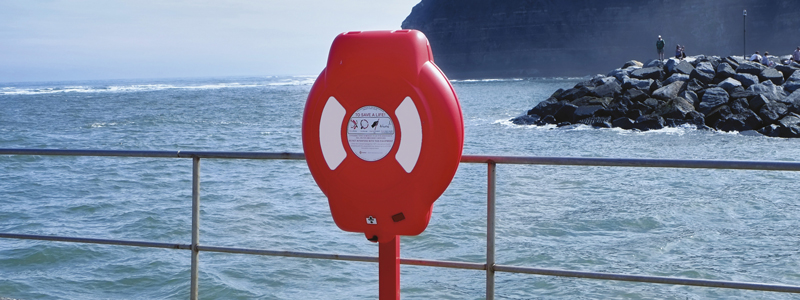 Add My Company
Add My Company
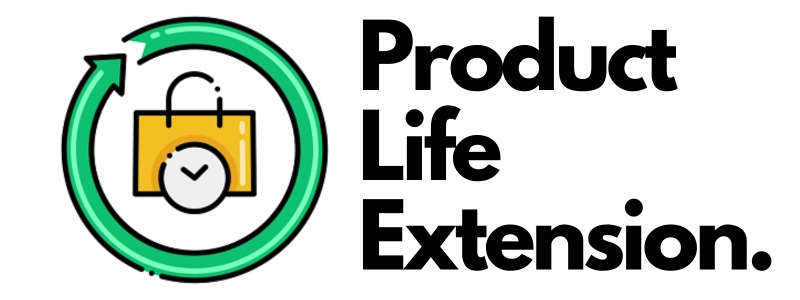
A culture of disposable goods has fostered a linear economy characterised by rapid production, consumption and disposal. However, a growing awareness of environmental challenges and resource scarcity is driving a paradigm shift towards a more circular economy. Central to this transformation is Product Life Extension (PLE), a strategic approach that prioritises product longevity, repair and reuse.

In this article, we will explore PLE, its advantages and the specific techniques organisations can use to implement it successfully. Additionally, we'll examine how Glasdon's design approach aligns with this model.
What is Product Life Extension?
PLE is a business design strategy focused on extending the lifespan and value of a product beyond its initial intended use. It encompasses various business and manufacturing processes to ensure a product remains in service and can be repaired, upgraded, or repurposed, maximising complete utilisation before disposal.
The primary goal of PLE is to decrease the consumption of virgin raw materials. Products made from subpar or unrecyclable materials can degrade, break and lose value quickly, ultimately ending up in landfills and squandering the resources used to make them. By creating high-quality items that are longer-lasting and can be readily repaired or recycled, we can limit the creation of new products and reduce society's dependence on untapped resources.
"As individual consumers, the single best thing we can do for the planet is to keep our stuff in use longer." -
Rose Marcario, CEO of Patagonia.*
A Brief History of Product Lifespans
Although the term "Product Life Extension" is relatively modern, the concept has roots in various historical and cultural traditions. Historically, products were crafted for endurance; longevity was a hallmark of quality. In pre-industrial societies, there was also a significant focus on the ability to repair and reuse goods. Disposal was a final option as many items were deemed too valuable to waste, with communities frequently having skilled craftsmen who could mend and revamp various items, including clothing and tools.*
However, during the post-World War II era of the 1950s and 1960s, there was a marked increase in consumerism, particularly evident in Western countries. This surge was driven by innovative advertising strategies that promoted frequent buying, significant progress in plastic manufacturing, particularly in disposable, single-use products and the implementation of planned obsolescence, where goods were intentionally designed with short lifespans. Additionally, society started valuing convenience over long-term satisfaction, leading to the widespread acceptance of a "throwaway culture".*
The Benefits of a Longer Product Life
In the context of the 21st century, there has been a notable shift in focus. Governments and organisations are increasingly embracing circular economy principles, acknowledging that extending the lifespan of products offers benefits to all stakeholders, including consumers, both environmentally and economically.
The Environmental Benefits
-
Reduces Waste Generation and Landfill Impact
The sheer volume of materials ending up in landfills is a global concern, but product life extension offers a formidable solution to this matter. Every year a product remains in use is a year it avoids contributing to the ever-growing landfill problem.
-
Conserves Resources and Raw Materials
Prolonging the lifespan of products is crucial for conserving resources. When goods are designed to last longer, it reduces the need for frequent manufacturing, ultimately decreasing the consumption of raw materials.
-
Lowers Carbon Emissions
Embodied emissions, also known as Scope 3 emissions, refer to the greenhouse gas emissions associated with the extraction of resources, production, use and disposal of a product or assets throughout its entire lifecycle. By increasing the lifespan of products and eliminating the need for new production, we can reduce the associated embodied emissions.
The Economical Benefits
-
Improves Customer Satisfaction
By demonstrating a commitment to product longevity and even providing repair services, businesses can cultivate customer loyalty and drive repeat business. This, in turn, has the potential to boost revenue and ensure sustained profitability in the long run.
-
Provides Cost Savings for Consumers
Extending the lifespan of products enables consumers to derive more value from their investments. Consumers can save money by having the option to maintain and repair their products, reducing the frequency of new purchases.
-
Reduces Waste Management Costs
By decreasing the amount of products being discarded in landfills, there is potential for cost savings in managing waste. Adopting product life extension practices can result in reduced expenses for businesses and municipalities in terms of waste collection, transportation and processing.
Strategies for Product Life Extension
At the heart of PLE is a holistic design philosophy encompassing the entire manufacturing process, from production to post-production. To extend the lifecycle of a product and keep it within the maturity stage, organisations can follow some of the following certified strategies:
Production Strategies
-
Durable Design and Quality Manufacturing
-
- Use robust, long-lasting materials to ensure the product can withstand wear and tear.
- Focus on precision and quality in the manufacturing process with superior craftsmanship.
-
Modular and Upgradable Design
- Design products with modular parts that can be easily replaced or upgraded.
- Anticipate future technological advancements and design products with future-proofing in mind so they can be upgraded with new features or components when needed.
-
Sustainable and Recyclable Materials
- Use materials that are recyclable or biodegradable to facilitate recycling at the end of the product’s life.
- Design products for easy disassembly and material recovery.
-
Planned Obsolescence Reduction
- Avoid using materials or components with predetermined lifespans.
Post-Production Strategies
-
Repair and Maintenance Services
- Offer comprehensive repair services with easily accessible spare parts.
- Provide clear instructions for self-repair or DIY maintenance.
-
Customer Education and Engagement
- Educate customers on proper usage and maintenance to extend the product’s life.
Quality By Design
The core ethos of Glasdon is Quality By Design, manufacturing and supplying innovative market-leading products that enable our customers to contribute towards a cleaner, safer and more sustainable environment. This means providing our customers with products that offer guaranteed longevity and are recyclable at the end of their long service life.
To achieve this goal, our approach not only involves following the aforementioned PLE strategies but also carefully selecting the right materials. We choose durable, reliable and environmentally friendly recycled materials that can withstand the test of time. In addition to containing recycled content, we are extremely proud to say that all Glasdon products are recyclable at the end of their service life, allowing the materials to be reintegrated into the economy for re-processing and reuse. Let’s examine three of our primary materials and a few product lines that utilise them.
Durapol®
One material that is consistently used across our product line, particularly in our Litter and Recycling bins, is Durapol. This lightweight polymer is renowned for its durability and resistance to impact and high temperatures. Its exceptional ability to withstand chipping and rust also ensures that our waste solutions are built to last and thrive in bustling urban areas.
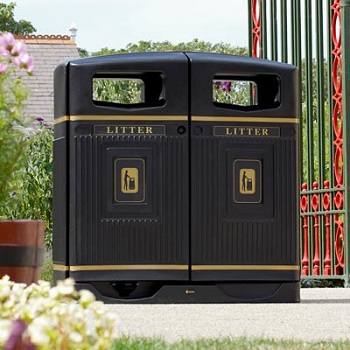
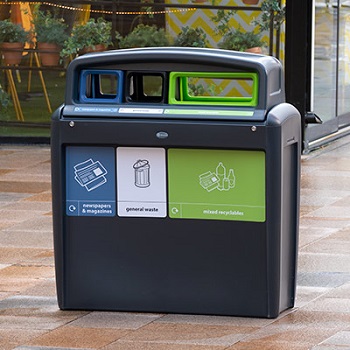
In a waterside environment, having corrosion-resistant equipment that lasts is crucial. That's why we use Durapol to construct our Water Safety Equipment. This material protects against extreme temperatures and shields lifesaving devices from harmful UV rays, which can degrade flotation devices. This guarantee of material protection preserves vital lifesaving tools in the event of an emergency.
Enviropol®
This recycled material is predominantly produced from post-consumer and industrial polythene, including used supermarket carrier bags, resulting from the increased availability of ‘quality’ segregated and uncontaminated waste for recycling.
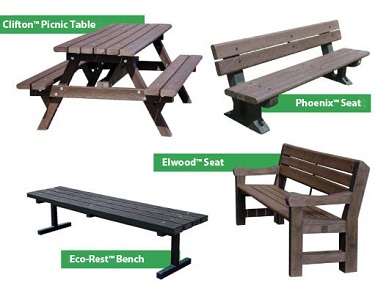
Present across a large selection of our Recycled Materials Seating range, Enviropol is dense, strong and weather-resistant, ensuring Glasdon seats, benches and picnic tables have a long, virtually maintenance-free service life.
An important feature of Enviropol is that it is also 100% recyclable when it reaches the end of its long service life. This crucial aspect has greatly contributed to the success of our latest waste management solutions, the Origin™ Curve 110 and Origin™ Horizon 110, highlighting our commitment to sustainability and our next steps on this journey.
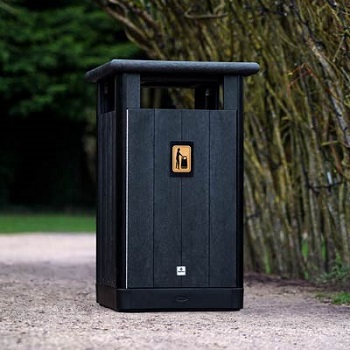
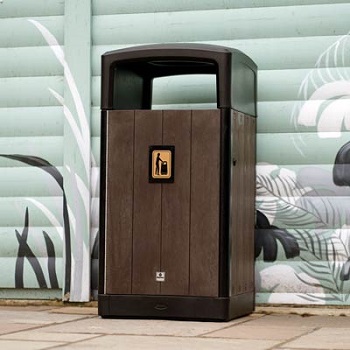
Duratec™
Most Glasdon Indoor Recycling Bins are made from Duratec, a lightweight material specifically designed for internal environments. Beyond its appealing appearance, Duratec offers a combination of toughness, rigidity and dimensional stability, ensuring it remains functional and aesthetically pleasing. These qualities are essential for office settings where usage is high and placement may change frequently.

Moving away from Duratec, our indoor waste solutions showcase compact future-proofing, designed to remain in use for extended periods while adapting to changing waste management programmes. Adaptable waste streams are beneficial for the successful maintenance of a recycling programme as business needs evolve. Glasdon addresses this with our Spare Recycling Bin Apertures, allowing customers to purchase alternative recycling bin apertures to create new streams when needed. This adaptability ensures our recycling bins remain effective and versatile for current and future requirements.
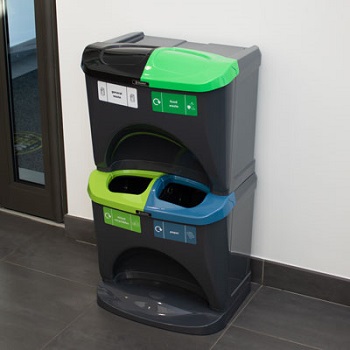
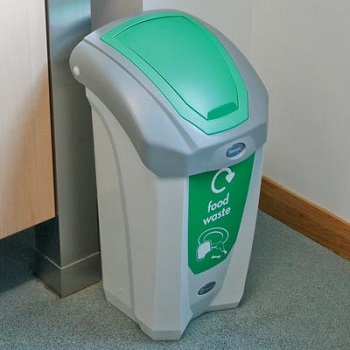
Test, Test, Test!
We love to test! We want to ensure that our judicious selection of materials and robust construction capabilities meet high standards. Thorough testing and quality assurance control during the product manufacturing process are pivotal in extending a product's life cycle. By thoroughly assessing a product from conception to market, and beyond, we can identify and rectify potential issues that may shorten its lifespan prematurely.
To find out more about the Glasdon Quality Assurance Process and how we ensure our products are built to last, click here.
The Road Ahead
As we navigate the challenges of a rapidly changing world, the importance of embracing sustainable practices cannot be overstated. By embracing PLE, businesses can not only contribute to a more sustainable future but also gain a competitive advantage in the marketplace.
At Glasdon, we aim to be a leading example of PLE by integrating its principles into our design process. This journey is a collaborative effort; by partnering with our customers, we seek to fully realise the potential of extending product life cycles and work together towards a more sustainable future.
If you would like more information on this topic or to learn more about how Glasdon's materials adhere to the PLE philosophy, please Contact us today.
For more information on Beyond Disposal: How Product Life Extension Champions a Greener Future talk to Glasdon UK Limited


